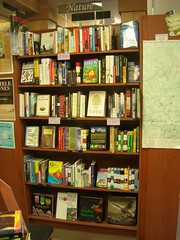
Earlier this week I went up to a friend's smallholding near Aberystwyth to help her with her garden (she's recently had major surgery).
As I tidied up the front of a grassed-up stone wall, I found two frogs (one small and yellowy and the other full grown and much darker). There were two big Canada Geese in the field behind me, and I heard the first cuckoo of the year. Two Orange Tip butterflies fluttered about in the company of a Small White. Above me I heard what I thought was a Buzzard, and looking up, I saw a pair of Red Kites. Kites are the success story of the century, coming back from the brink of extinction in this country with just a few breeding pairs to a very healthy 672 - 840 estimated pairs in 2007. This wonderful site will show you some amazing photographs and videos. Enjoy.
Anyway, as I worked, I looked up again and counted TEN pairs of Red Kites swirling in the sky above my head. I always feel very privileged just to see ONE kite, but ten pairs were amazing. I always count myself to be so fortunate to live in countryside so rich in wildlife.
Back at home, my new (Niger) seed feeder has attracted firstly Goldfinches and now the Siskins which Rowan said she has visiting her seed feeder. I have never seen them in my garden before so I am thrilled. If I get the Redpolls she has visiting her garden too, I shall be over the moon as I've never seen them before either - not anywhere.

















































